Aclidinium bromide
- CAS NO.:320345-99-1
- Empirical Formula: C13H10BrN
- Molecular Weight: 564.56
- MDL number: MFCD22683690
- EINECS: 825-171-6
- SAFETY DATA SHEET (SDS)
- Update Date: 2025-12-23 13:58:55
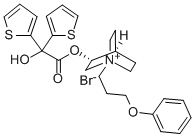
What is Aclidinium bromide?
Description
In July 2012, aclidinium bromide was approved in the US and the EU for long-term maintenance treatment of bronchospasm associated with chronic obstructive pulmonary disorder (COPD). Aclidinium bromide is in the latter category, acting as a selective antagonist for the muscarinic M3 receptor. M3 receptors are localized in airway smooth muscle, and are the primary subtype responsible for bronchial and tracheal smooth muscle contraction. Muscarinic antagonists are well-established bronchodilators that are effective for treating COPD, but these agents have unwanted side effects if systemically absorbed. Systemic exposure can be limited by inhaled administration, which is the route of delivery for aclidinium bromide. In addition, aclidinium bromide was designed to undergo rapid hydrolysis in human plasma, providing inactive acid and alcohol products, and reducing the potential for systemic side effects. Aclidinium bromide was identified amongst a series of quaternary ammonium (3R)-quinuclidinol esters as having the best combination of high potency (M3 Ki=0.14 nM), long duration of action (29 h for 50% reduction of therapeutic effect in a guinea pig bronchoconstriction model), low oral absorption, and rapid plasma degradation. The synthesis of aclidinium bromide was achieved by reaction of dimethyl oxalate with 2-thienylmagnesium bromide followed by treatment of the resulting methyl ester with (3R)-quinuclidinol in the presence of sodium hydride. Quaternization of the amine was achieved by treatment with 3-phenoxypropyl bromide to give aclidinium bromide.
Originator
Almirall (Spain)
The Uses of Aclidinium bromide
Aclidinium Bromide inhibits human muscarinic AChR M1, M2, M3, M4 and M5 with Ki of 0.1 nM, 0.14 nM, 0.14 nM, 0.21 nM and 0.16 nM, respectively
The Uses of Aclidinium bromide
Aclidinium Bromide is a novel long-acting antimuscarinic bronchodilator in phase II clinical trials for the treatment of chronic obstructive pulmonary disease.
Definition
ChEBI: A quaternary ammonium salt that is the bromide salt of aclidinium. A muscarinic acetylcholine M3 receptor antagonist, for the long-term maintenance treatment of bronchospasm associated with chronic obstructive pulmonary disease (COPD).
brand name
Tudorza Pressair? (US) Eklira?/Bretaris? Genuair? (EU)
Clinical Use
Aclidinium bromide was approved by the U. S. Food and Drug Administration (FDA) in July 2012 for the treatment of chronic obstructive pulmonary disease (COPD). Marketed by Forest Pharmaceuticals, aclidinium bromide selectively binds to five human muscarinic receptors (M1-M5), and posesses a subnanomolar binding affinity for these particular targets. Administered by inhalation, this medicine has demonstrated favorable onset and duration of action, and its safety profile is an improvement over competitor therapies.
Synthesis
No manufacturing route has been disclosed to date, the most scalable published synthesis is described in the scheme. Dimethyl oxalate (1) was initially treated with two equivalents of Grignard 2 to give bis-thiophenoate 3 in 36% yield. Subsequent transesterification with (R)-quinuclidinol (4) gave rise to the quinuclidine-containing ester 5 in 50% yield. Aclidinium bromide (I) could be accessed by two different methods involving bromoalkyl phenyl ether 6?aan excess of bromide in the presence of an acetonitrile/chloroform mixture gave the drug in 89% isolated yield, or with fewer equivalents of electrophile (1.25 eq) during exposure to refluxing acetophenone has reportedly delivered (I) quantitatively on multi-gram scale.17 From commercial 2, the multi-gram synthesis of Aclidinium bromide (I) was completed in 17.8% over three steps.
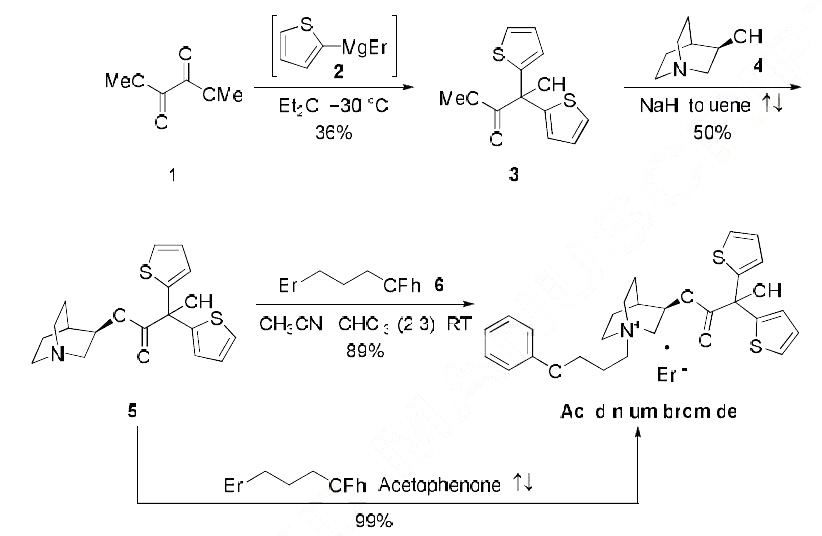
References
[1] gavaldà a1, ramos i2, carcasona c3, calama e4, otal r5, montero jl6, sentellas s7, aparici m8, vilella d9, alberti j10, beleta j11, miralpeix m12. the in vitro and in vivo profile of aclidinium bromide in comparison with glycopyrronium bromide. pulm pharmacol ther. 2014 aug;28(2):114-21.
Properties of Aclidinium bromide
| Melting point: | 230 °C(Solv: acetonitrile (75-05-8)) |
| storage temp. | under inert gas (nitrogen or Argon) at 2–8 °C |
| solubility | DMSO (Slightly, Heated), Methanol (Slightly) |
| form | Solid |
| color | White to Pale Orange |
Safety information for Aclidinium bromide
Computed Descriptors for Aclidinium bromide
New Products
Indole Methyl Resin tert-butyl 9-methoxy-3-azaspiro[5.5]undecane-3-carboxylate Boc-His(Boc)-OH 2-CTC Resin 4-Chloro-7-tosy1-7Hpyrrolo[2,3-d]pyrimidine 5,7-Dibromo-1H-indole 2,5-dichloro-N-hydroxy-4,6-dimethylpyridine-3-carboximidamide 2,2-Dimethoxy-7-azaspiro[3.5]nonane hydrochloride 4-chloromethyl-5-methyl-1,3-dioxol-2-one (DMDO-Cl) R-2-BENZYLOXY PROPIONIC ACID 1,1’-CARBONYLDIIMIDAZOLE 1,1’-CARBONYLDI (1,2-4 TRIAZOLE) N-METHYL INDAZOLE-3-CARBOXYLIC ACID 4-((2-hydroxyethyl)thio)benzoic acid 1-(TERT-BUTOXYCARBONYL)-2-PYRROLIDINONE Methyl 6-methylnicotinate 3-Pyridineacrylic acid tert-Butyl carbazate TETRAHYDRO-2H-PYRAN-3-OL 2-((4-morpholinophenylamino) (methylthio) methylene) malononitrile 3-(4-morpholinophenylamino)-5-amino-1H-pyrazole-4-carbonitrile 2,4-dihydroxybenzaldehyde 1,3-Diethyl-1,3-Diphenylurea Methyl 2-methylquinoline-6-carboxylateRelated products of tetrahydrofuran


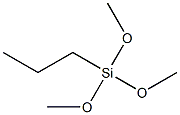
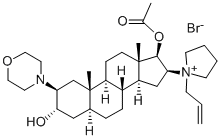

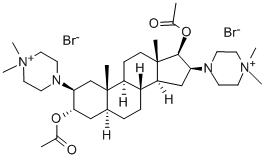
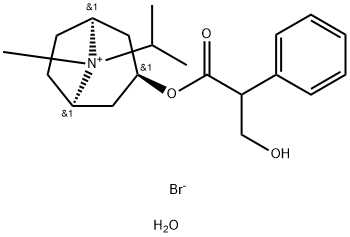

You may like
-
 Pyridine 99.5% HPLC /UV SpectroscopyView Details
Pyridine 99.5% HPLC /UV SpectroscopyView Details
110-86-1 -
 Guanine , 99%View Details
Guanine , 99%View Details
73-40-5 -
 Piperazine Spot supply, best priceView Details
Piperazine Spot supply, best priceView Details
110-85-0 -
 Potassium Hydroxide 90%View Details
Potassium Hydroxide 90%View Details
1310-58-3 -
 Dibutyl PhthalateView Details
Dibutyl PhthalateView Details
84-74-2 -
 Imidazole Spot supply, competitive priceView Details
Imidazole Spot supply, competitive priceView Details
288-32-4 -
 Octadecyl 3-(3,5-di-tert-butyl-4-hydroxyphenyl)propionate 98% (GC)View Details
Octadecyl 3-(3,5-di-tert-butyl-4-hydroxyphenyl)propionate 98% (GC)View Details
2082-79-3 -
 Thiourea 99% ARView Details
Thiourea 99% ARView Details
62-56-6
